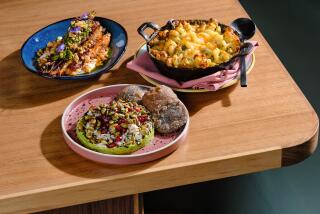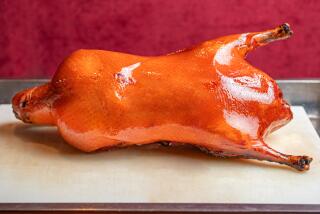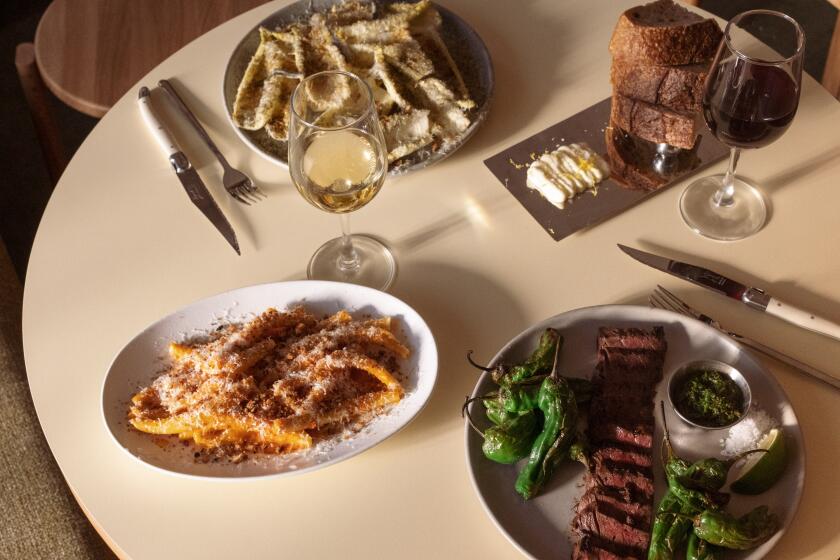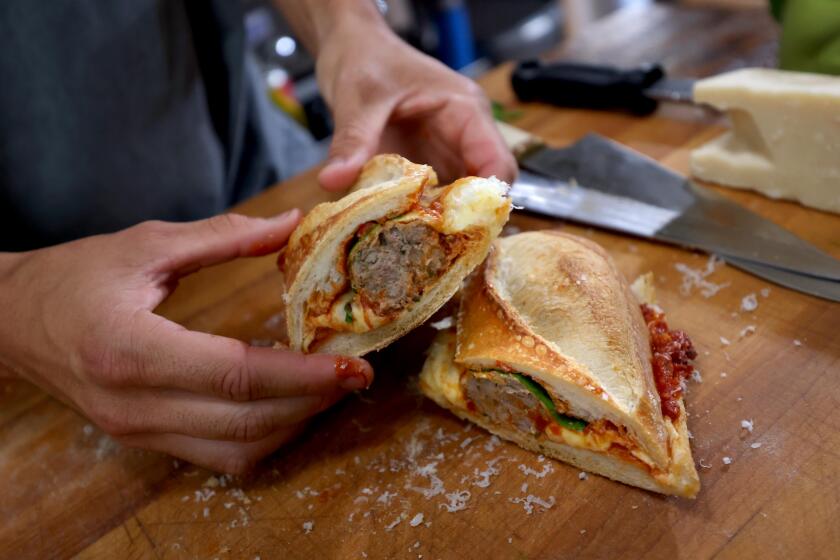A Balancing Act
I don’t mean to be an old sourpuss, but when I hear cooks say they’re “playing” with a certain flavor, I get an urge to pat them on the head and point them to the nearest sandbox. Focusing on one flavor at a time is not serious cooking, any more than painting in one primary color is serious art. Even in his bluest period, Picasso blended enough colors to make various shades that color seem like an entire palette.
This may seem an obvious point, but it is frequently missed, especially when we encounter an unfamiliar cuisine. What impresses us first is how it differs from what we know. We think, “Wow, that’s sour,” or “Wow, that’s spicy,” perhaps without noticing how a good cook has carefully built an underlying structure of flavors to support it.
When we come home and try to re-create those dishes, it is that first impression that sticks in our mind, rather than the overall effect. We remember a couple really big trees, not the forest.
But good cooking, no matter the cuisine, is about shading and complexity. Sour, sweet, hot and salty flavors are elements that must be kept in balance.
Sourness is one of the most interesting of the basic flavors, and it may be the most structural. It provides the hard line that keeps other flavors from straying. While we use salt to heighten flavor, we use acidity to provide definition.
We use it to counter sweetness so that the natural complexity of flavors comes through. Take the papaya. On its own, it’s really a pretty bland fruit--sweet, but not much else. Add a squeeze of lime juice, though, and all of a sudden a whole range of complex flavors opens up. (Add a dusting of ground chile in addition, and you get even more.)
Sourness also works, perhaps most usefully on something that isn’t a taste at all. When a dish is extremely fatty, a jolt of sour acidity provides the backbone to support all that richness. This is the principle behind a thousand preparations from beurre blanc (where acidic white wine provides the structure for what is otherwise just artfully melted butter) to bigos (where it’s sauerkraut that cuts the voluptuousness of fatty meats).
It’s important to remember that cooking is much more than chemistry. The fact that lemons and limes share citric acid does not mean they share much else. Limes have a splendid herbaceous, almost grassy quality. Lemons are brighter, more uncomplicated (except for Meyer lemons, of course, which have a complex, almost tangerine quality). The rest of the citrus family--oranges, grapefruit, tangerines--each has specific qualities as well, though they are generally much sweeter than lemons and limes and, therefore, less useful structurally, at least without some support. There’s an even wider variety of acetic sour flavors in vinegar--from winey to sweet.
But most sour tastes--taken by themselves--tend to be fairly thin and mean. If you really want to show them off, make sure you’ve built a stage that’s up to the task. Just as acidity works to add definition to sweets and fatty foods, the reverse is also true.
A very little bit of sugar works wonders for dishes that are based on sour tastes. It’s important to remember that, except for desserts, the sweetness shouldn’t be perceptible. All you should taste is a fuller sourness. Otherwise, you risk falling into that “special sauce” trap that seems so prevalent among young chefs these days, with every dish having a vaguely sweet undertone.
Fat can be used the same way. If a little acidity adds definition to a butter sauce, a bit of fat rounds out the sharp spikes in sour dishes.
One of the best uses I’ve found for cheap balsamic vinegar incorporates both of these ideas. Jean-Louis Palladin makes a simple sauce by reducing a couple cups of balsamic vinegar with three or four minced shallots (the sugar) then, when it comes almost to a glaze, whipping in a couple tablespoons of butter (the fat).
It’s not complicated. When you get right down to it, it’s simply a matter of painting with a full palate.
DUCK BIGOS
This recipe comes from Steve Holzinger, who writes the “eGGsalad” column on the Electronic Gourmet Guide, an Internet food magazine (https://www.2way/food/egg/index.html). He emphasizes that bigos is more a process than a recipe. “A recipe would be counter to its nature. It is a back-of-the-stove stew that simmers a long time to give tough stuff a chance to soften up.”
1 (4-pound) duck, cut into 6 pieces (2 leg portions, each breast halved)
Salt, pepper
1 clove garlic, minced
6 ounces slab bacon, diced
1 pound kielbasa, sliced
2 large onions, diced
2 large apples, cored and diced
4 pounds sauerkraut, drained, liquid reserved
3 cups dry white wine
4 cups chicken stock
Season duck well with salt and pepper and rub with garlic. Place in large, deep roasting pan and roast at 400 degrees until browned, 45 to 50 minutes. Remove, pat with paper towel to remove excess oil and reserve.
Cook bacon in bottom of roasting pan over medium-low heat until browned, about 10 minutes. Remove and reserve with duck. Cook kielbasa until browned, about 10 minutes. Drain and reserve with duck.
Add onions and apples to roasting pan and cook to soften, about 10 minutes. If there is too much fat, drain, leaving only 1 to 2 tablespoons. Add drained sauerkraut and stir well, scraping browned bits from bottom of pan.
Move sauerkraut to 1 side of roasting pan. Return duck to pan and cover with sauerkraut. Add wine and stock. Bake at 350 degrees until duck is tender, 1 hour. If liquid reduces too much, add sauerkraut juice or more stock or wine. Sauerkraut should be well moistened but not watery.
When duck is tender, spoon off as much of the extra fat as possible, reserving for another use. Add kielbasa and bacon and bury in sauerkraut. Move duck to top of sauerkraut, skin-side up. Continue roasting until duck skin crisps, about 30 minutes.
Spoon generous serving of sauerkraut onto plate, being sure to include some kielbasa and bacon in each serving, and top with portion of duck. Serve with mashed potatoes.
4 servings. Each serving:
1156 calories; 3444 mg sodium; 177 mg cholesterol; 93 grams fat; 26 grams carbohydrates; 35 grams protein; 3.70 grams fiber.
More to Read
Eat your way across L.A.
Get our weekly Tasting Notes newsletter for reviews, news and more.
You may occasionally receive promotional content from the Los Angeles Times.











